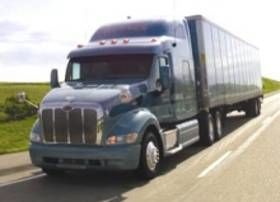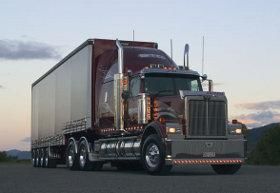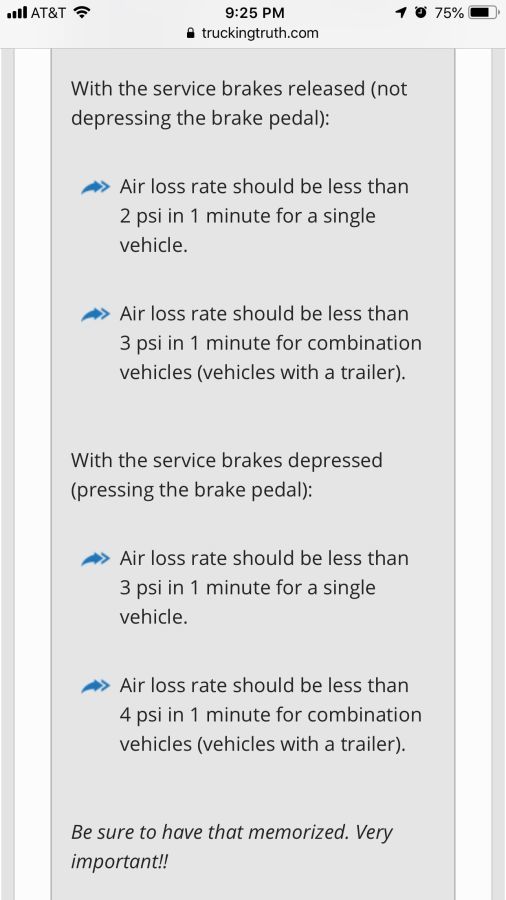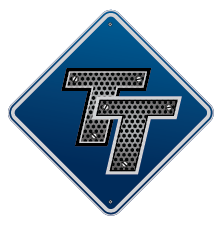Air Leakage Tests
Topic 28182 | Page 1
Applied is foot pressing on brake. Static is leakage without touching anything.
That question threw me off quite a bit as well because of the way its worded. After you see both of them(static & applied) and get them mixed up a few times you’ll start to recognize the difference in the 2 questions right away

Thanks Delco Dave, I was sure I was just over-complicating the questions. This is such a great forum, and I am happy to be able to pose questions with experienced drivers!
Another question: Do modern trucks use both hydraulic AND air brake systems? The CDL handbook places considerable emphasis on both systems, although, it would seem redundant to have both systems. I am also using Daniel B's Trucking Truth Pre-Inspection Guide to get as muck knowledge as possible before going to trucking school, and his guide mentions air brake inspections for the DMV (post-permit and school) tests, but nothing about hydraulic tests. My assumption is that the CDL Handbook is covering all bases by discussing how to check and operate both systems.
CDL:
Commercial Driver's License (CDL)
A CDL is required to drive any of the following vehicles:
- Any combination of vehicles with a gross combined weight rating (GCWR) of 26,001 or more pounds, providing the gross vehicle weight rating (GVWR) of the vehicle being towed is in excess of 10,000 pounds.
- Any single vehicle with a GVWR of 26,001 or more pounds, or any such vehicle towing another not in excess of 10,000 pounds.
- Any vehicle, regardless of size, designed to transport 16 or more persons, including the driver.
- Any vehicle required by federal regulations to be placarded while transporting hazardous materials.
Dm:
Dispatcher, Fleet Manager, Driver Manager
The primary person a driver communicates with at his/her company. A dispatcher can play many roles, depending on the company's structure. Dispatchers may assign freight, file requests for home time, relay messages between the driver and management, inform customer service of any delays, change appointment times, and report information to the load planners.DMV:
Department of Motor Vehicles, Bureau of Motor Vehicles
The state agency that handles everything related to your driver's licences, including testing, issuance, transfers, and revocation.

I do not believe any trucks have both air and hydraulic brakes. They have one or the other. Air brakes are the standard for semis as you can hook air lines and disconnect from the trailer. With hydraulic system they need to be enclosed systems and if air were in the system they would have to be bled.
This is a great forum with a lot of great people/professional drivers willing to help and answer even the silliest of questions. I am not a commercial driver yet, been studying High road and PA manual since October with the plan to head to Company training in Spring 2020, well Corona happened and put everything on hold. I hope to get back on track in next few weeks.
As far as hydro vs air brakes.... To my knowledge all tracker trailers use air brake systems so they can hook to any trailer. Pretty sure the only place you might run into hydraulic brakes would be class B box, trash, or dump trucks but I think most of them are air systems as well

Hi truckers,
I am currently studying for my CDL permit, and I am having trouble differentiating between the Applied Leakage Test and the Static Leakage Test, with regards to the maximum air loss rate. Both tests require a fully-charged air system, before the engine is turned off. and take one minute. Is the only real difference that the static test is without any braking measures, allowing the air to escape on its own, while the applied test requires the driver to press and hold the service brake during the 1 minute test?
I keep missing the practice test questions, and it is frustrating because sometimes the correct answer is 2 psi/minute and sometimes it is 3psi/minute for a single vehicle. Is the "Brake Off or Brake On" the important wording in these questions?
Thanks in advance for your input,
Ryann
IIRC the 2 psi drop applies to single vehicles and the 3 psi drop applies to combination vehicles.
CDL:
Commercial Driver's License (CDL)
A CDL is required to drive any of the following vehicles:
- Any combination of vehicles with a gross combined weight rating (GCWR) of 26,001 or more pounds, providing the gross vehicle weight rating (GVWR) of the vehicle being towed is in excess of 10,000 pounds.
- Any single vehicle with a GVWR of 26,001 or more pounds, or any such vehicle towing another not in excess of 10,000 pounds.
- Any vehicle, regardless of size, designed to transport 16 or more persons, including the driver.
- Any vehicle required by federal regulations to be placarded while transporting hazardous materials.
Combination Vehicle:
A vehicle with two separate parts - the power unit (tractor) and the trailer. Tractor-trailers are considered combination vehicles.
OWI:
Operating While Intoxicated
Just so there's no confusion... This is from the High Road program!!!

Just so there's no confusion... This is from the High Road program!!!
You need to know this for your state exam. The brake test is one of the parts that allow no wiggle room. It's pass or fail, not points. If you miss this detail, they are likely fail you.

It makes a lot of sense, now that I think about it, that air brakes WOULD be the standard. I am currently studying a lot of information about coupling trailers, and it wouldn't make sense to have mismatched systems. For the test, I will make sure I know the testing procedure for hydraulic brakes, even though the truck/trailer I use will probably have air brakes, so I can relate that information to the examiner. The Vehicle Inspection Test is the one I am most concerned with, so I am devoting a lot of time to make sure I know what to check and how to perform all checks.
I am definitely going to cross reference the "High Road" if I get confused. The CDL Handbook is extensive but not written to be easily understood at all times by individuals new to trucking. I wonder if anyone who works on writing it has any real-world experience? Probably not ;(
Thanks for all the replies and information.
CDL:
Commercial Driver's License (CDL)
A CDL is required to drive any of the following vehicles:
- Any combination of vehicles with a gross combined weight rating (GCWR) of 26,001 or more pounds, providing the gross vehicle weight rating (GVWR) of the vehicle being towed is in excess of 10,000 pounds.
- Any single vehicle with a GVWR of 26,001 or more pounds, or any such vehicle towing another not in excess of 10,000 pounds.
- Any vehicle, regardless of size, designed to transport 16 or more persons, including the driver.
- Any vehicle required by federal regulations to be placarded while transporting hazardous materials.
I don't remember having the 2psi single vehicle thing in the pa cdl learners manual. It was probably there but I just have no memory of it.
CDL:
Commercial Driver's License (CDL)
A CDL is required to drive any of the following vehicles:
- Any combination of vehicles with a gross combined weight rating (GCWR) of 26,001 or more pounds, providing the gross vehicle weight rating (GVWR) of the vehicle being towed is in excess of 10,000 pounds.
- Any single vehicle with a GVWR of 26,001 or more pounds, or any such vehicle towing another not in excess of 10,000 pounds.
- Any vehicle, regardless of size, designed to transport 16 or more persons, including the driver.
- Any vehicle required by federal regulations to be placarded while transporting hazardous materials.
New Reply:
New! Check out our help videos for a better understanding of our forum features

















Preview:








 TT On Facebook
TT On Facebook
Hi truckers,
I am currently studying for my CDL permit, and I am having trouble differentiating between the Applied Leakage Test and the Static Leakage Test, with regards to the maximum air loss rate. Both tests require a fully-charged air system, before the engine is turned off. and take one minute. Is the only real difference that the static test is without any braking measures, allowing the air to escape on its own, while the applied test requires the driver to press and hold the service brake during the 1 minute test?
I keep missing the practice test questions, and it is frustrating because sometimes the correct answer is 2 psi/minute and sometimes it is 3psi/minute for a single vehicle. Is the "Brake Off or Brake On" the important wording in these questions?
Thanks in advance for your input,
Ryann
CDL:
Commercial Driver's License (CDL)
A CDL is required to drive any of the following vehicles:
OWI:
Operating While Intoxicated